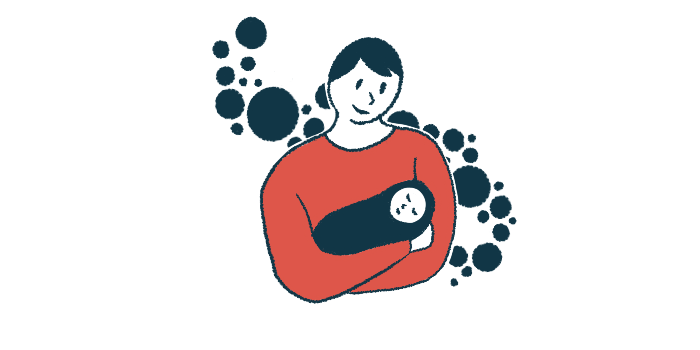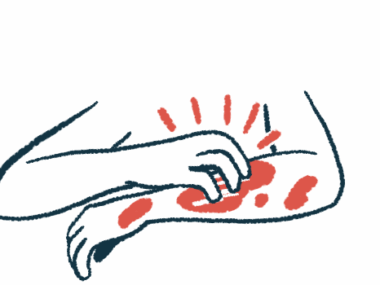Scientists ID ways to aid Alagille syndrome diagnosis in infants
Distinctive features may help distinguish condition vs. biliary atresia: Study
Written by |

In infants younger than 3 months, identifying heart problems and distinctive facial features, as well as blood markers and certain liver tissue abnormalities, may aid in the diagnosis of Alagille syndrome — and, importantly, help distinguish it from biliary atresia, another rare condition affecting the liver, according to a new study from China.
Additionally, the researchers noted that genetic testing for Alagille-causing mutations in the JAG1 or NOTCH2 genes is essential for confirming an Alagille diagnosis when clinical and liver tissue findings are not conclusive.
“Based on our findings, we emphasize that differentiating … [Alagille syndrome from biliary atresia] requires a comprehensive approach, incorporating clinical features, biochemical markers, liver [tissue analysis], and genetic testing,” the scientists wrote.
The team noted that “Alagille syndrome (ALGS) is a multisystem disorder that [may be] confused with biliary atresia (BA) shortly after birth,” and said “this study aimed to identify criteria for early distinction between these two diseases.”
Titled “Prompt distinction of Alagille syndrome and biliary Atresia in infants: a comparative study,” the study was published in the journal BMC Pediatrics.
Alagille syndrome is caused by mutations in one copy of either the JAG1 or NOTCH2 genes, both of which are involved in embryonic development. These mutations lead to a wide range of developmental abnormalities and resulting symptoms, typically involving liver damage, heart problems, characteristic facial features, and bone abnormalities.
Liver damage, a hallmark of Alagille, is usually caused by a reduced number of bile ducts, the tubes that carry bile, a digestive fluid, from the liver to the intestines. This ultimately leads to slowed bile flow, or cholestasis, that results in the toxic accumulation of bile in the liver and bloodstream. Over time, this can lead to liver scarring, known as fibrosis, and liver failure.
Early, correct Alagille syndrome diagnosis called ‘crucial’
Biliary atresia, another infantile condition marked by cholestasis, occurs when the bile ducts are blocked or absent. Because it may cause liver-related symptoms similar to those of Alagille — including pale stools, jaundice, or yellowing of the skin and eyes, and itching — distinguishing between the two conditions in the weeks after birth may be difficult.
Still, “accurate distinction between ALGS and BA in early life is crucial,” the researchers wrote. Misdiagnosis can lead to unnecessary invasive procedures, delay appropriate treatment, and accelerate disease progression.
In this study, a trio of researchers from the Children’s Hospital of Chongqing Medical University, National Clinical Research Center for Child Health and Disorders, aimed to identify criteria to better distinguish between the two diseases in infants younger than 3 months of age.
To that end, the team retrospectively analyzed data from 14 infants with Alagille and 28 age- and sex-matched infants with biliary atresia; all were seen at the researchers’ Chinese hospital.
The Alagille infants had a median age at disease onset of 50.5 days, and were most commonly boys (71.4%).
All infants in both groups had signs of cholestasis. However, heart abnormalities were significantly more common among the Alagille patients (78.6% vs. 25%). Other issues were reported only in the Alagille group, including facial features such as a prominent forehead, dropping eyelids, and small chins, as seen in 21.4% of these infants.
The data showed that, in contrast, the children with Alagille were significantly less likely to have abnormalities in the gallbladder, the organ where bile is stored (64.3% vs. 96.4%). These infants also were less likely to have an enlarged liver (35.7% vs. 75%) or spleen (35.7% vs. 71.4%).
Bone and kidney issues were seen in 14.3% of patients in each group.
Regarding biochemical markers, the Alagille group had significantly lower blood levels of the liver enzyme gamma-glutamyl transpeptidase (GGT) and higher levels of fibrinogen, a molecule involved in blood clotting, than those with biliary atresia. Alagille patients also had significantly lower prothrombin time, a test that measures how long it takes for blood to clot; longer times may also be associated with liver damage.
Clinicians urged to look for distinctive facial features, heart problems
Results from liver biopsies indicated that bile ductular proliferation, or the increased growth of bile duct-like structures in response to injury, was significantly less frequent in Alagille patients (22.2% vs. 96.4%). Similar findings were seen for the presence of plugs of solidified bile that obstruct bile ducts (44.4% vs. 92.9%), and for fibrosis (11.1% vs. 60.7%).
Overall, most infants with Alagille (64.3%) and all of those with biliary atresia underwent biliary exploration, an invasive procedure used to investigate and manage issues in the bile ducts, for suspected biliary atresia.
To effectively distinguish between [Alagille syndrome] and [biliary atresia] in infants [younger than 3] months of age, clinicians should evaluate [heart] anomalies, distinctive facial features, [blood] GGT levels, ultrasound findings, and liver [tissue analysis].
One infant in the Alagille group initially received a first-line treatment for biliary atresia, called Kasai portoenterostomy, that involves creating a new tube to carry bile out of the liver. However, jaundice did not ease, and this child subsequently developed itching and facial features of Alagille.
A genetic analysis revealed a disease-causing JAG1 mutation, confirming an Alagille diagnosis and prompting treatment with ursodeoxycholic acid, a medication sold as Urso and Actigall that helps bile move through the bile ducts.
Overall, during follow-up, half of the Alagille infants were stable and under regular monitoring, while three underwent liver transplant, and one developed irreversible liver scarring, or cirrhosis, and was preparing for liver transplant. Two infants died from liver damage.
Genetic analysis was only performed in the Alagille group, and indicated that all but one participant carried JAG1 mutations (92.9%); the remaining infant had a NOTCH2 mutation. Four novel mutations were identified: c.743delC, c.1930dupT, c.93dupC, and chr20:10624511-10625059 duplication.
“To effectively distinguish between ALGS and BA in infants [younger than 3] months of age, clinicians should evaluate [heart] anomalies, distinctive facial features, [blood] GGT levels, ultrasound findings, and liver [tissue analysis],” the researchers wrote.
Still, the team called for larger, multicenter studies to confirm these findings and their generalizability.








